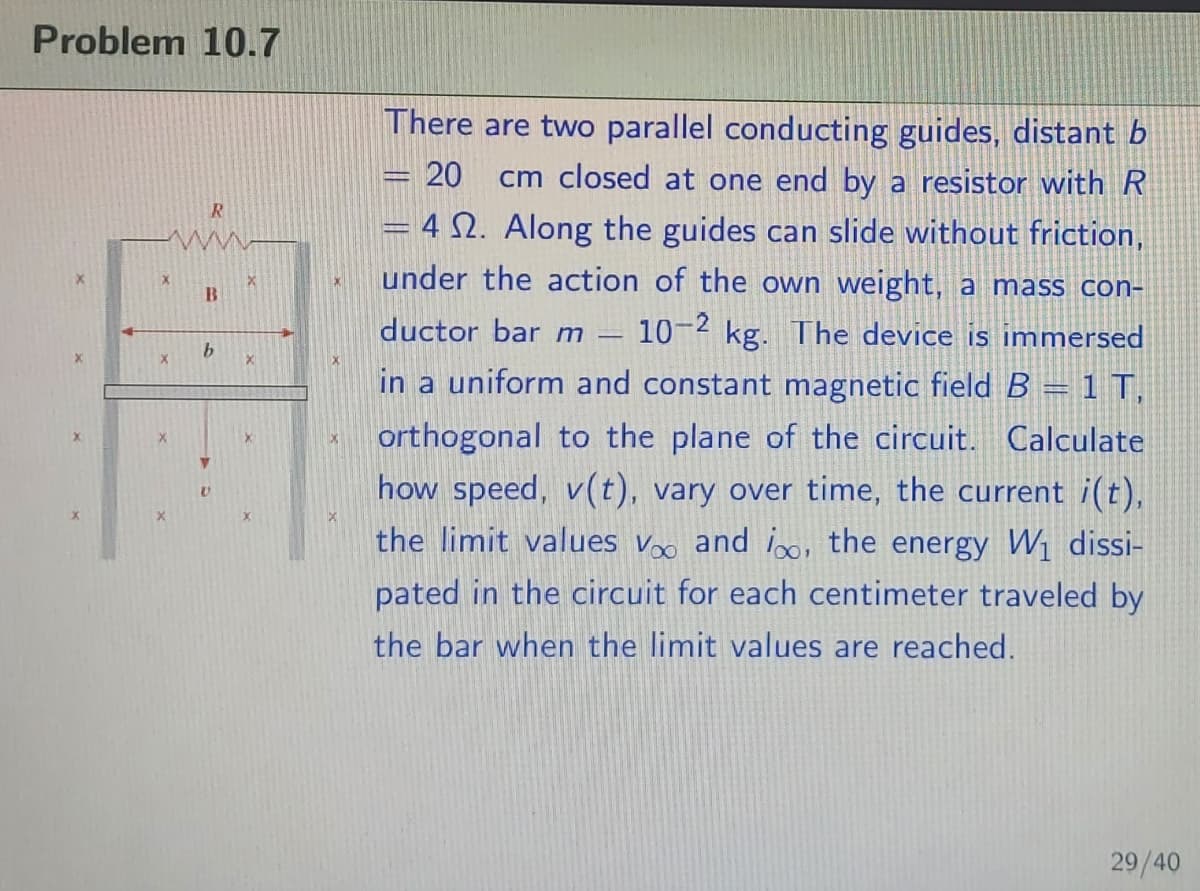There are two parallel conducting guides, distant b 20 cm closed at one end by a resistor with R R = 4 N. Along the guides can slide without friction, under the action of the own weight, a mass con- B ductor bar m 10-2 kg. The device is immersed - in a uniform and constant magnetic field B = 1 T, orthogonal to the plane of the circuit. Calculate how speed, v(t), vary over time, the current i(t), the limit values v and i, the energy W1 dissi- pated in the circuit for each centimeter traveled by the bar when the limit values are reached.
There are two parallel conducting guides, distant b 20 cm closed at one end by a resistor with R R = 4 N. Along the guides can slide without friction, under the action of the own weight, a mass con- B ductor bar m 10-2 kg. The device is immersed - in a uniform and constant magnetic field B = 1 T, orthogonal to the plane of the circuit. Calculate how speed, v(t), vary over time, the current i(t), the limit values v and i, the energy W1 dissi- pated in the circuit for each centimeter traveled by the bar when the limit values are reached.
Related questions
Question
If possible i'd like a detailed solution for this question, with the name of equations used to solve and a bit of an explanation, thank you!

Transcribed Image Text:Problem 10.7
There are two parallel conducting guides, distant b
20
cm closed at one end by a resistor with R
= 4 N. Along the guides can slide without friction,
under the action of the own weight, a mass con-
ductor bar m
10-2 kg. The device is immersed
in a uniform and constant magnetic field B = 1 T,
orthogonal to the plane of the circuit. Calculate
how speed, v(t), vary over time, the current i(t),
the limit values v and i, the energy W1 dissi-
pated in the circuit for each centimeter traveled by
the bar when the limit values are reached.
29/40
Expert Solution
This question has been solved!
Explore an expertly crafted, step-by-step solution for a thorough understanding of key concepts.
Step by step
Solved in 2 steps
